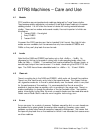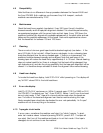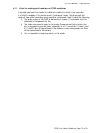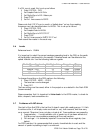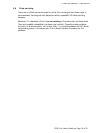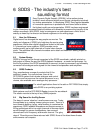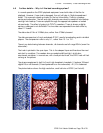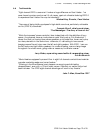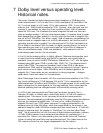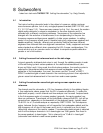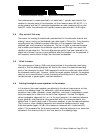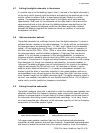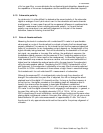8 Subwoofer s
SDDS Print Master Guidelines, Page 21 of 26
8 Subwoofers
- taken from tech note T N99051701 “setting t he s ubwoof er s ”, by Craig Connelly
8.1
I ntr oduct ion
T he topi c of setting s ubwoofer levels is the s ubj ect of numerous articles and even
more numer ous opinions, but of only a s i ngl e pr opos ed s tandar d (S MPT E RP 200, and
IT U 10-11R/T emp/11-E). There ar e many reasons for this. First, the us e of the moder n
digital audio s ubwoofer is unique i n comparison to the other channels and i t is
recorded wi th a di fferent monitoring r efer ence. The pur pos e of the s ubwoofer has
changed with the evol uti on of cinema s ound, from compens ating for the poor low
frequency response and bass power capability of older screen speakers, to addi ng
power to low fr equency effects even in theatres having full range s cr een speakers and
capable amplifiers. Secondly, different post production facilities and even different
engineer s have followed thei r own alignment conventions. Finally, equipment and even
meter standards are di fferent when comparing the US A, Europe, and el s ewher e. This
wordy article i s only an overview and i s not meant to compr is e a s peci fi c calibration
process or set of instructions.
8.2
Setting t he acoust ical reference level on the dub st age.
A s i gnal , generally wide band pi nk noise, is sent through the dubbing cons ole to each
of the moni tor i ng s ys tem’s screen speakers at the electrical reference level (also
known as Dolby Level). Using a r eal time thir d octave analys er , the moni tor system is
adjusted for the pr eferred acous ti cal response at each loudspeaker, given the
properties of the l ouds peaker , the r oom, the s cr een, and the “X- cur ve” of SMPT E
202M. The electr i cal gain of each channel in the moni tor i ng s ys tem is then adjusted to
give an acoustical reference level in the r oom fr om each screen speaker.
8.3
Setting t he subw oofer acoustical gain using a s cr een speaker as a
reference.
T he channel used for subwoofer or LFE (low fr equency effects) in the dubbi ng theatr e
is then adjusted as above, except that the S PL is measured di fferently. To make this
adjustment properly, a mul t i - channel real time analys er must be us ed. Analyser bands
in the fl at-r es pons e r egi on of a s cr een speaker (generally, the centr e s peaker ) are
taken as a r ef er ence. These bands will not individually measure 85dB SPL, but will be
somewhat less, depending on the bandwi dth of the anal ys er ’s bands, typically about
70 dB SPL for a 1/3 -octave analys er as required by SMPT E 202M. This flat-response
region, between the low fr equency roll off caused by the louds peaker cabinet and the
high frequency roll off due to the s cr een and X- cur ve, is referred to as the i n-band
(acoustical) response of the moni tor speaker. The s ubwoofer electrical gain is adjusted
such that the anal ys er channels in its in-band r egi on are 10dB greater than those i n
the s cr een speaker’s in-band r egi on. This is referred to as “10dB of in -band gai n”
(subwoofer level relative to each screen speaker level).



